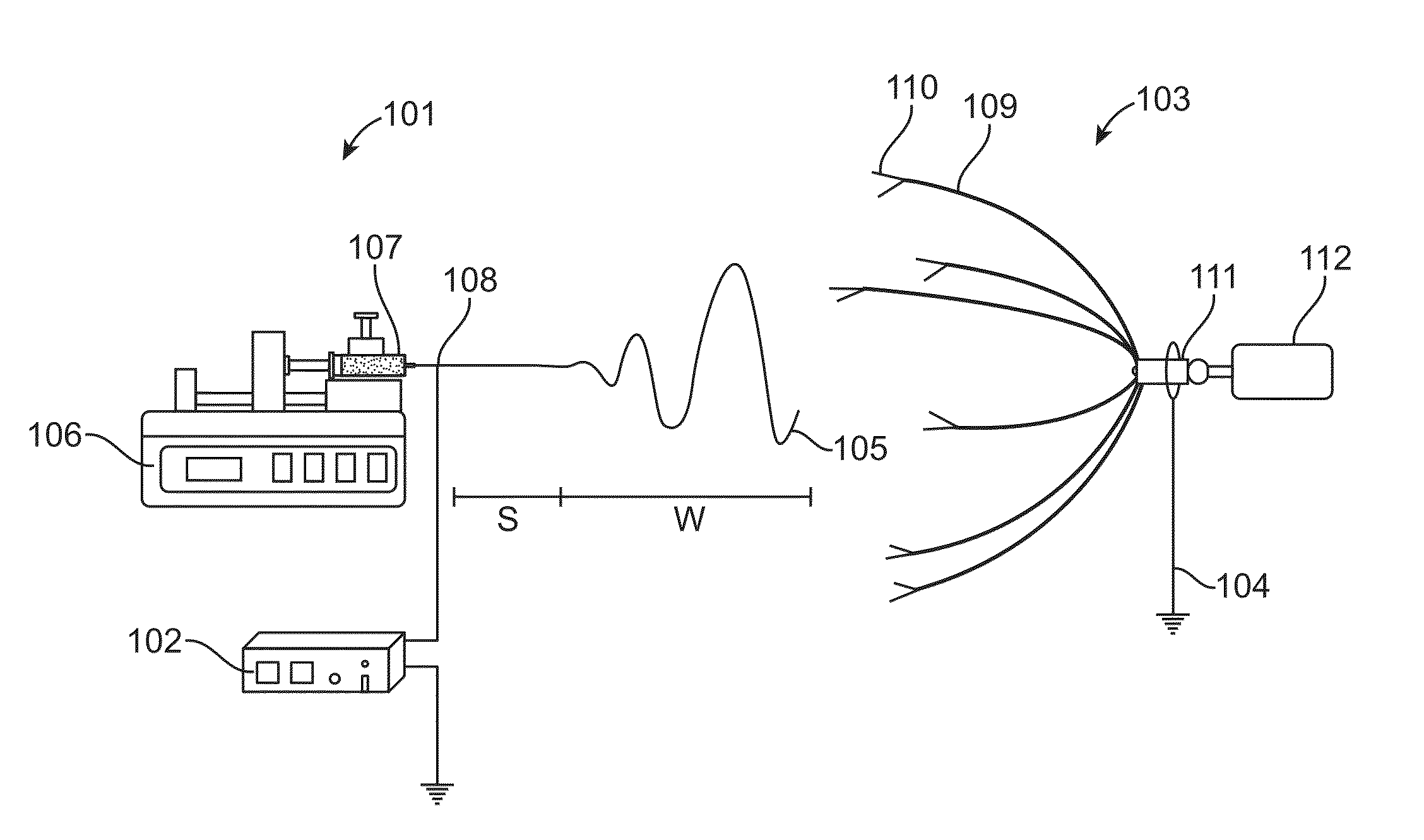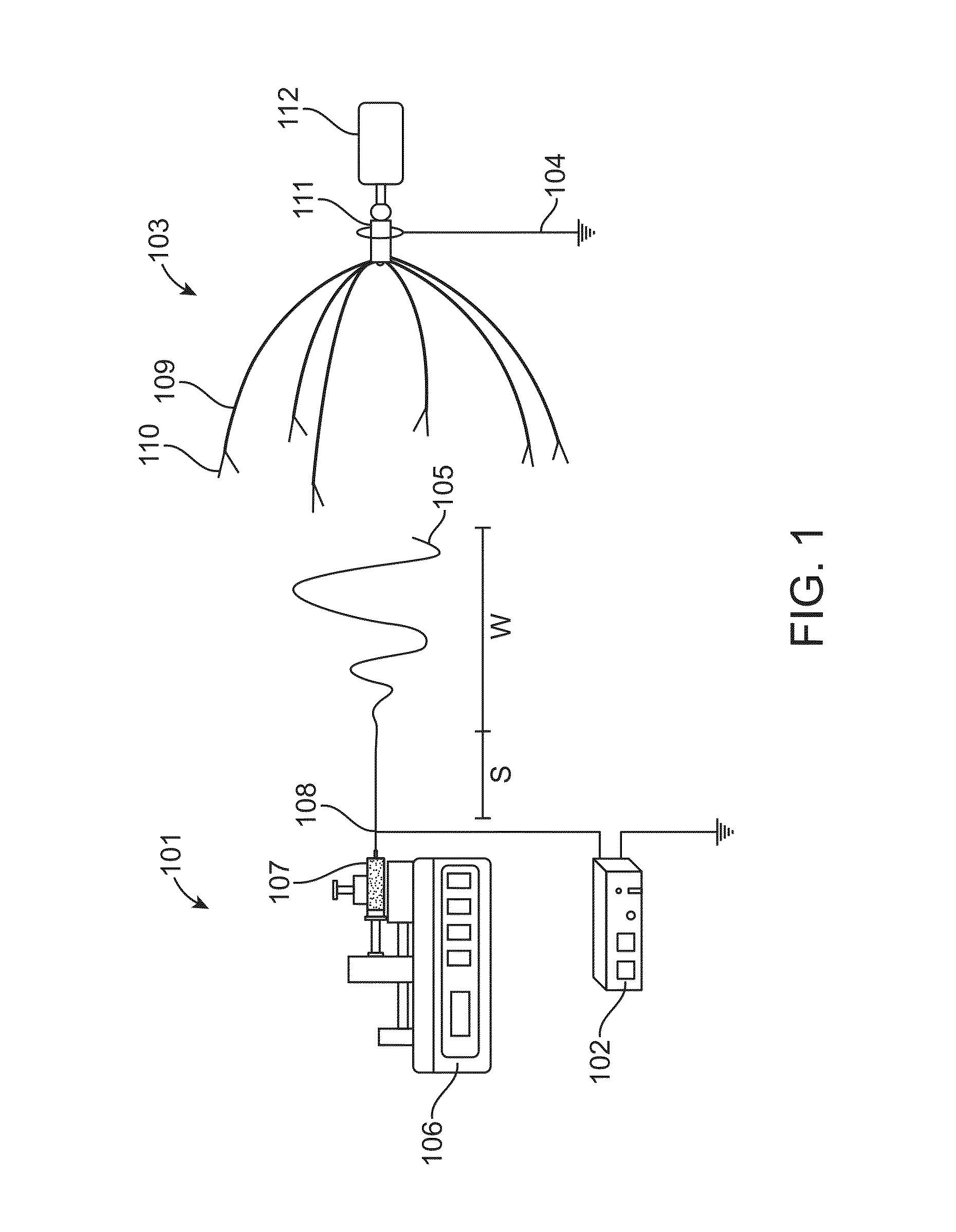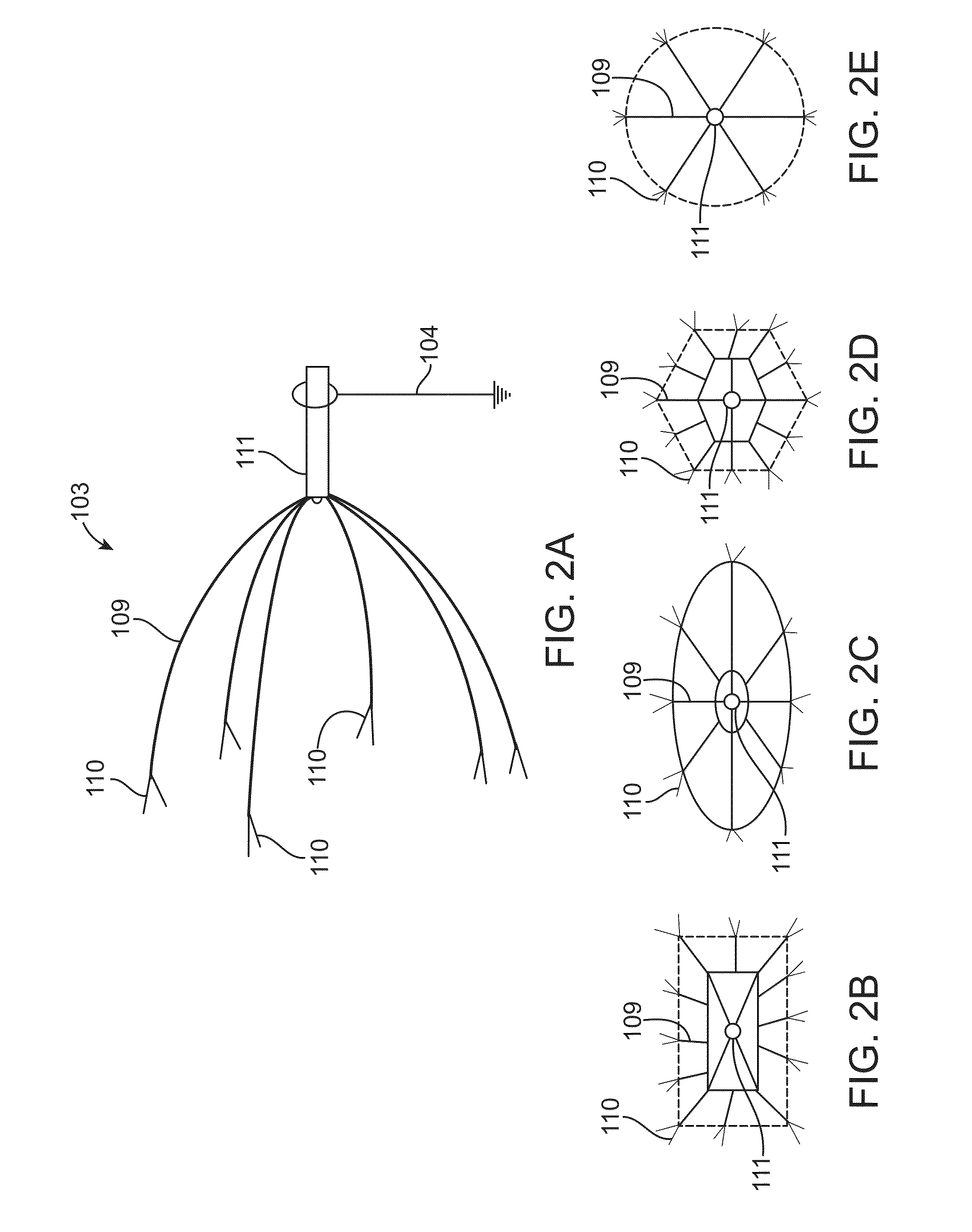Electrospinning apparatus and method for producing multi-dimensional structures and core-sheath yarns
a technology of electrospun and coresheath yarn, which is applied in the field of electrospun, can solve the problems of poor mechanical properties, non-woven or aligned two-dimensional electrospun membranes lacking desirable characteristics such as porosity and strength, and achieves the effect of achieving non-woven or aligned two-dimensional electrospun membranes that are lacking in several applications and lack the desired characteristics of porosity and strength
- Summary
- Abstract
- Description
- Claims
- Application Information
AI Technical Summary
Benefits of technology
Problems solved by technology
Method used
Image
Examples
example 1
[0041]Example 1 illustrates fabrication of two dimensional non-woven mats using the above electrospinning setup. The polymeric solution was loaded in a syringe connected to a metallic spinneret which was placed at 180° relative to the axis of the collector. The spinneret was maintained at a positive potential (7-15 kV) and the collector was grounded. The rotation speed of the motor attached to the collector was set to 100 rpm so as to maintain a uniform electric field at each circumferential plane of the collector. To obtain 2-D electrospun mats as shown in FIGS. 7A and 7B, the diameter of the collector was adjusted to be less than 10 cm. If mass of polymeric solution (inertia) is low or if the diameter of collector is less than 10 cm, the whipping region takes over the stable region and if the whipping region covers a larger area than the diameter of the collector, fibers will deposit in the form of a mat as shown in FIG. 7A. Other operational parameters such as flow rate, voltage,...
example 2
[0042]Example 2 illustrates fabrication of three dimensional fluffy scaffolds using the above electrospinning setup. Two syringes loaded with polymeric solution were applied positive and negative polarity (7-15 kV) respectively, and aligned such that their spinnerets were set at ˜90° relative to each other and at 45° to the axis of the collector as shown in FIG. 3B. The collector was grounded and the rotation speed of the motor attached to the collector was set to 100 rpm so as to maintain a uniform electric field at each circumferential plane of the collector.
[0043]To obtain 3-D fluffy fibers, the diameter of the hemispherical collector was adjusted from 12 to 15 cm. Other operational parameters such as flow rate, voltage, tip-target distance and concentration of the polymeric solution were optimized by changing the parameters independently so as to generate fibrous scaffolds with fibers of optimal diameter. FIG. 8A shows the optical image of three dimensional electrospun fluffy PL...
example 3
[0044]In Example 3, using the same electrospinning setup, 1-D continuous yarns were obtained from the 3-D fluffy scaffold deposited within the collector set to a diameter of 12-15 cm. The spinneret in this case was positioned at an angle of 45° with respect to the axis of the hemispherical collector. Such an arrangement would facilitate yarn withdrawal from the collector. After subsequent deposition of fibers onto the needles, a guide wire was introduced to withdraw the fibrous mass, resulting in the formation of a cone near the mouth of the collector. Additionally, the rotation of the collector imparts a twist to the fibers, which in turn bundles them together to form a stable interlocked yarn. These yarns were then drawn towards a rotating mandrel whose speed was synchronized with that of the rotating collector. The variation of individual fiber as well as yarn diameters with parameters such as voltage, concentration of the polymeric solution, flow rate, collector rotation and upt...
PUM
| Property | Measurement | Unit |
|---|---|---|
| diameter | aaaaa | aaaaa |
| diameter | aaaaa | aaaaa |
| diameters | aaaaa | aaaaa |
Abstract
Description
Claims
Application Information
 Login to View More
Login to View More - R&D
- Intellectual Property
- Life Sciences
- Materials
- Tech Scout
- Unparalleled Data Quality
- Higher Quality Content
- 60% Fewer Hallucinations
Browse by: Latest US Patents, China's latest patents, Technical Efficacy Thesaurus, Application Domain, Technology Topic, Popular Technical Reports.
© 2025 PatSnap. All rights reserved.Legal|Privacy policy|Modern Slavery Act Transparency Statement|Sitemap|About US| Contact US: help@patsnap.com



